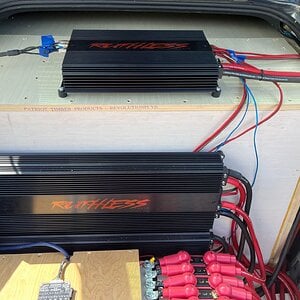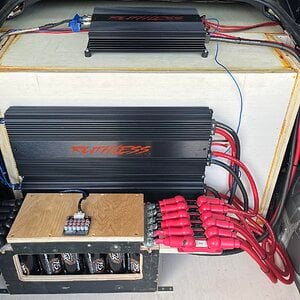For your setup, I would advise on a series 2 or 3, use contingent.
I have a series 1 because it was the only one in available for preorder. If I was pulling more than say 7000 watts, a series 2 or 10000 watts, a series 3 would have been the better choice.
Since they were all up to the task, the series one with its 96AH and current above what i need by a good 100A, was an easy choice. It gives me tons of reserve for messing around for an hour without the car running. Not something I would do very often anyway and usually not something anyone does with an extremely high wattage system.


